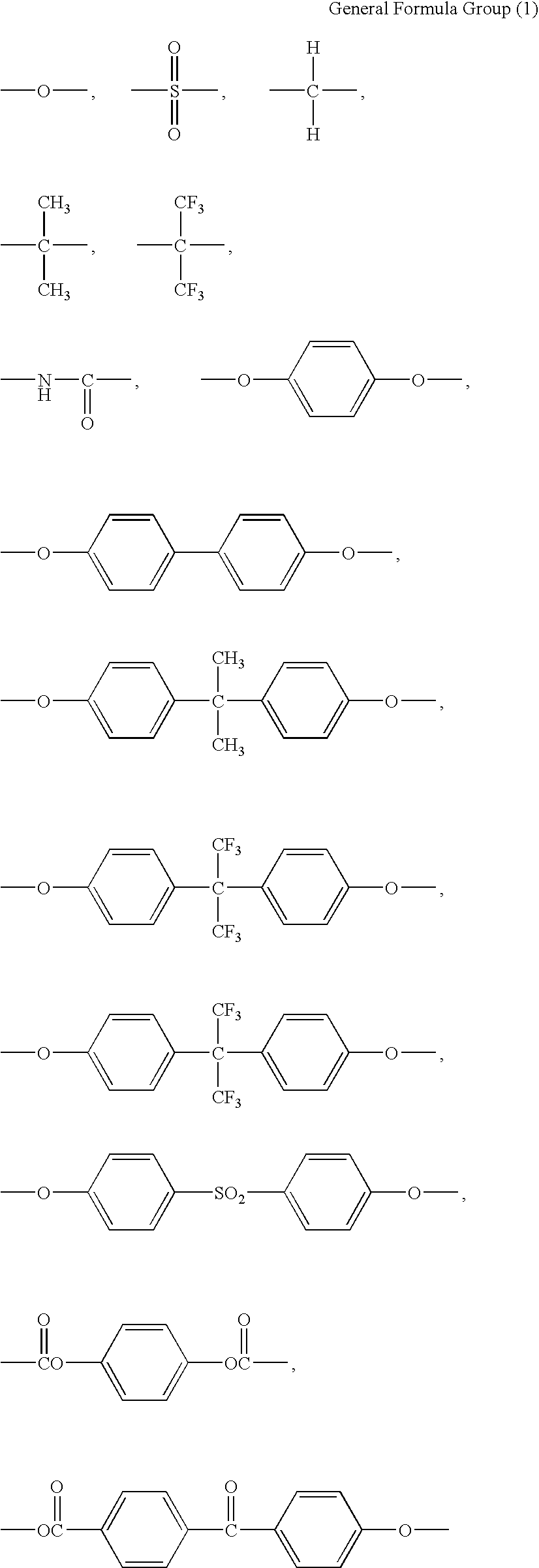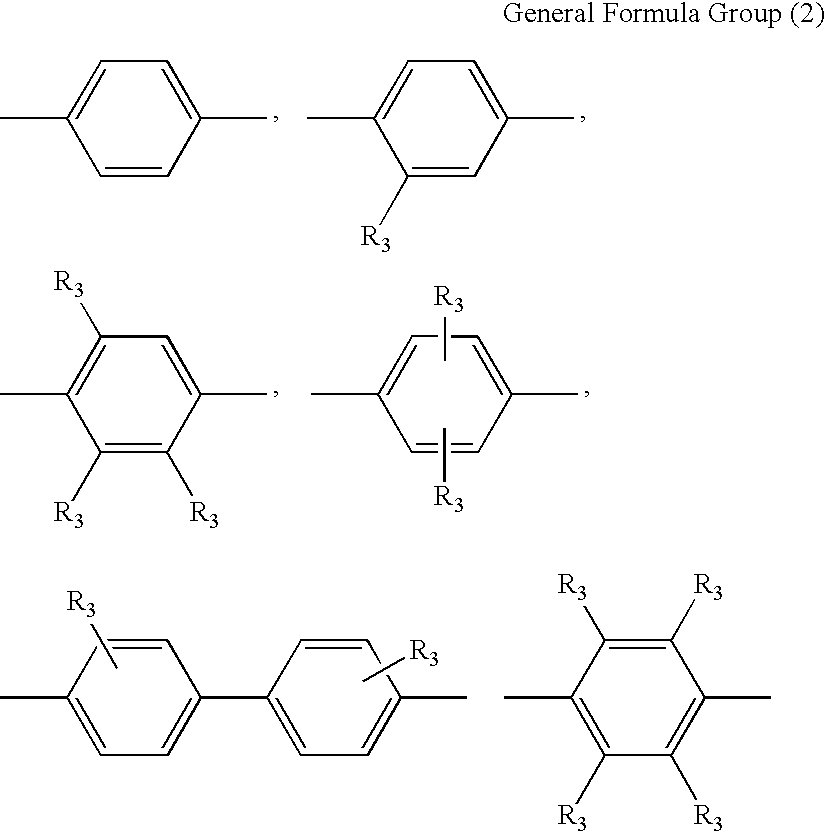Novel polyimide film with improved adhesiveness
a polyimide film, improved technology, applied in the direction of printed circuit aspects, transportation and packaging, chemistry apparatus and processes, etc., can solve the problems of poor adherability, poor adherability, poor adherability, etc., to improve the productivity of the film and suppress thermal distortion
- Summary
- Abstract
- Description
- Claims
- Application Information
AI Technical Summary
Benefits of technology
Problems solved by technology
Method used
Image
Examples
synthetic example 1
Synthesis of Thermoplastic Polyimide Precursor
[0103]To a 2,000 mL glass flask, 780 g of DMF and 117.2 g of bis[4-(4-aminophenoxy)phenyl]sulfone (hereinafter, also referred to as BAPS) were added. While the resulting mixture was being stirred in a nitrogen atmosphere, 71.7 g of 3,3′4,4′-biphenyltetracarboxylic dianhydride (BPDA) was gradually added to the mixture. Subsequently, 5.6 g of 3,3′,4,4′-ethyleneglycol dibenzoate tetracarboxylic dianhydride (hereinafter, also referred to as TMEG) was added, and the resulting mixture was stirred in an ice bath for 30 minutes. A solution of 5.5 g of TMEG in 20 g of DMF was separately prepared and gradually added to the reaction solution while monitoring the viscosity under stirring. The addition and the stirring were ceased when the viscosity reached 3,000 poise. A polyamic acid solution was thereby obtained.
[0104]The polyamic acid solution thereby obtained was flow-cast on a 25 μm PET film (Cerapeel HP, produced by Toyo Metallizing Co., Ltd.)...
examples 1 to 6
[0105]In a reaction system kept at 5° C., 4,4′-diaminodiphenylether (hereinafter also referred to 4,4′-ODA) and bis{4-(4-aminophenoxy)phenyl}propane (hereinafter also referred to BAPP) in a molar ratio shown in Table 1 were added to N,N-dimethylformamide ((hereinafter also referred to DMF), and stirred. After dissolution of 4,4′-ODA and BAPP was visually checked, benzophenonetetracarboxylic dianhydride (hereinafter, also referred to as BTDA) was added in a molar ratio shown in Table 1 and stirred for thirty minutes.
[0106]Then, pyromellitic dianhydride (hereinafter, also referred to as PMDA) was added in a molar ratio shown in Table 1 “PMDA (1st)” and stirred for thirty minutes. Thereby, a thermoplastic polyimide precursor block component was formed. Subsequently, p-phenylenediamine (hereinafter, also referred to as p-PDA) was added in a molar ratio shown in Table 1 and dissolved therein. Subsequently, PMDA was again added in a molar ratio shown in Table 1 “PMDA (2nd)” and stirred fo...
reference example 1
[0112]A polyimide film of 18 μm in thickness was prepared in the same manner as in Example 1, except that the polymerization of the polyamic acid was carried out with 3,4′-diaminodiphenylether (also referred to as “3,4′-ODA”) instead of 4,4′-ODA. In Reference Example 1, it took 25 hours from the start of the polymerization to obtain a film of 10,000 m long.
PUM
| Property | Measurement | Unit |
|---|---|---|
| mol % | aaaaa | aaaaa |
| peel strength | aaaaa | aaaaa |
| peel strength | aaaaa | aaaaa |
Abstract
Description
Claims
Application Information
 Login to View More
Login to View More - R&D
- Intellectual Property
- Life Sciences
- Materials
- Tech Scout
- Unparalleled Data Quality
- Higher Quality Content
- 60% Fewer Hallucinations
Browse by: Latest US Patents, China's latest patents, Technical Efficacy Thesaurus, Application Domain, Technology Topic, Popular Technical Reports.
© 2025 PatSnap. All rights reserved.Legal|Privacy policy|Modern Slavery Act Transparency Statement|Sitemap|About US| Contact US: help@patsnap.com



